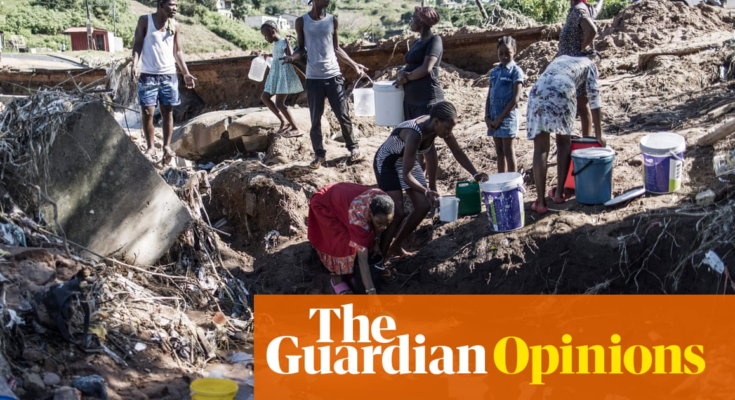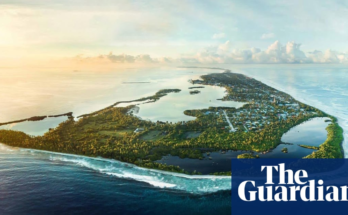The UN’s annual report on mitigating calamities shows that a radical rethink is needed to protect those who suffer most
Tue 26 Apr 2022 02.15 EDT
If the world seems beset by constant disasters, from the pandemic to drought, we only have ourselves to blame.
Over the past two decades, we have experienced up to 500 disasters a year as a result of human activity. By 2030, this could rise to 560 a year – or 10.7 a week.
Given the disproportionate impact these disasters have on the most vulnerable, the tragedy is that the world is actively reversing social and economic gains, particularly in developing countries, by underestimating the threat. With this broken risk perception, humanity itself is on a spiral of self-destruction – a key finding of the UN’s Global Assessment Report on Disaster Risk Reduction 2022 (Gar 2022).
Not only are the most exposed developing countries left with just a negligible share of international funding to prevent disasters or mitigate their impact, they are also the least insured, leaving the poorest to pay the highest cost. The world’s priorities are not aligned to those facing the greatest risk.
Climate change and disaster impacts are set to displace 216 million people inside their own countries by 2050, and push 132 million into poverty by 2030.
To prevent this, and shore up progress made around the world in reducing poverty, governments, development actors and the financial sector must reconfigure the way disaster risk is seen and managed. All sectors need to properly measure the true costs. For instance, the Asia-Pacific region loses an average of 1.6% of GDP to disasters each year, while Africa loses an average of 0.6%.
Yet “financing disaster risk” is too often isolated from other forms of risk management, leaving planners blind to the true cost of the climate crisis, which is causing that same dramatic increase in the number of disasters.
In reconfiguring how we manage these true costs, development projects, financial investments and governments should carry out regular social and environmental impact assessments to account for risk and indirect impacts so often neglected in these analyses.
More investment could then be better directed towards disaster risk reduction, which accounted for less than 5% of disaster-related aid financing between 2010 and 2019, and a minuscule portion of the global development pot.
Reducing the risk and impact of disasters around the world also means addressing the behavioural biases that too often place potential disasters far away, and far into the future. Global, regional and national institutions urgently need more systems that factor in how human minds make decisions about risk, considering the various biases that feed into this thinking. In particular, insurance and financial products should be reconfigured to incentivise risk reduction decisions.
After the 2010 earthquake and tsunami in Chile, its government helped incentivise safe construction by providing funds to poor families to cover the cost of “half a good house” that adhered to building codes, while allowing the personalisation of homes. Other tools, such as “opt-out” disaster insurance, could help overcome human decision-making barriers.
The increasing scale and frequency of disasters have made it clear that risk systems need to work with, not just for, affected people, to achieve the greatest possible buy-in.
In Nepal, flood early-warning systems come with flood risk communications co-designed with the most vulnerable communities themselves, resulting in a clear reduction in deaths due to flooding.
When the risk of disaster is largely of our own making, the silver lining is that it is within our power to stop it. The world has two opportunities to come together to act on the recommendations of Gar 2022. The first is the Global Platform for Disaster Risk Reduction, from 23-28 May, in Bali, Indonesia. The second is the Midterm Review of the implementation of the UN’s Sendai Framework for Disaster Risk Reduction, which will conclude in 2023.
Policy, finance and development sectors must start by accounting for risk and investing in inclusive risk reduction, particularly in the most affected countries. Only then can we protect the most vulnerable while safeguarding the social and economic gains made worldwide.
• Mami Mizutori is the UN secretary general’s special representative for disaster risk reduction and head of the UN Office for Disaster Risk Reduction (UNDRR)
{{topLeft}}
{{bottomLeft}}
{{topRight}}
{{bottomRight}}
{{/ticker}}
{{heading}}
{{#paragraphs}}
{{.}}
{{/paragraphs}}{{highlightedText}}
{{#choiceCards}}{{/choiceCards}}



